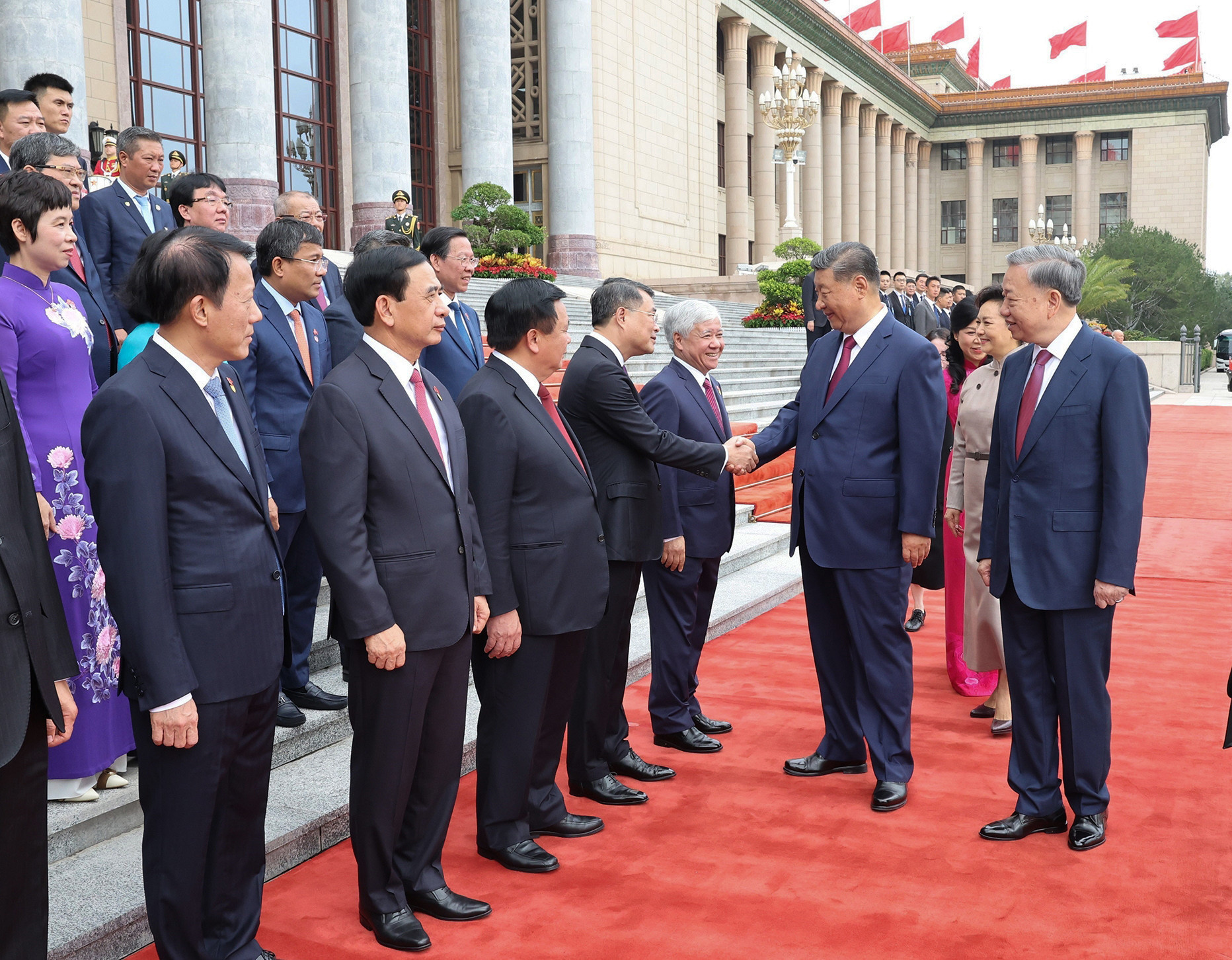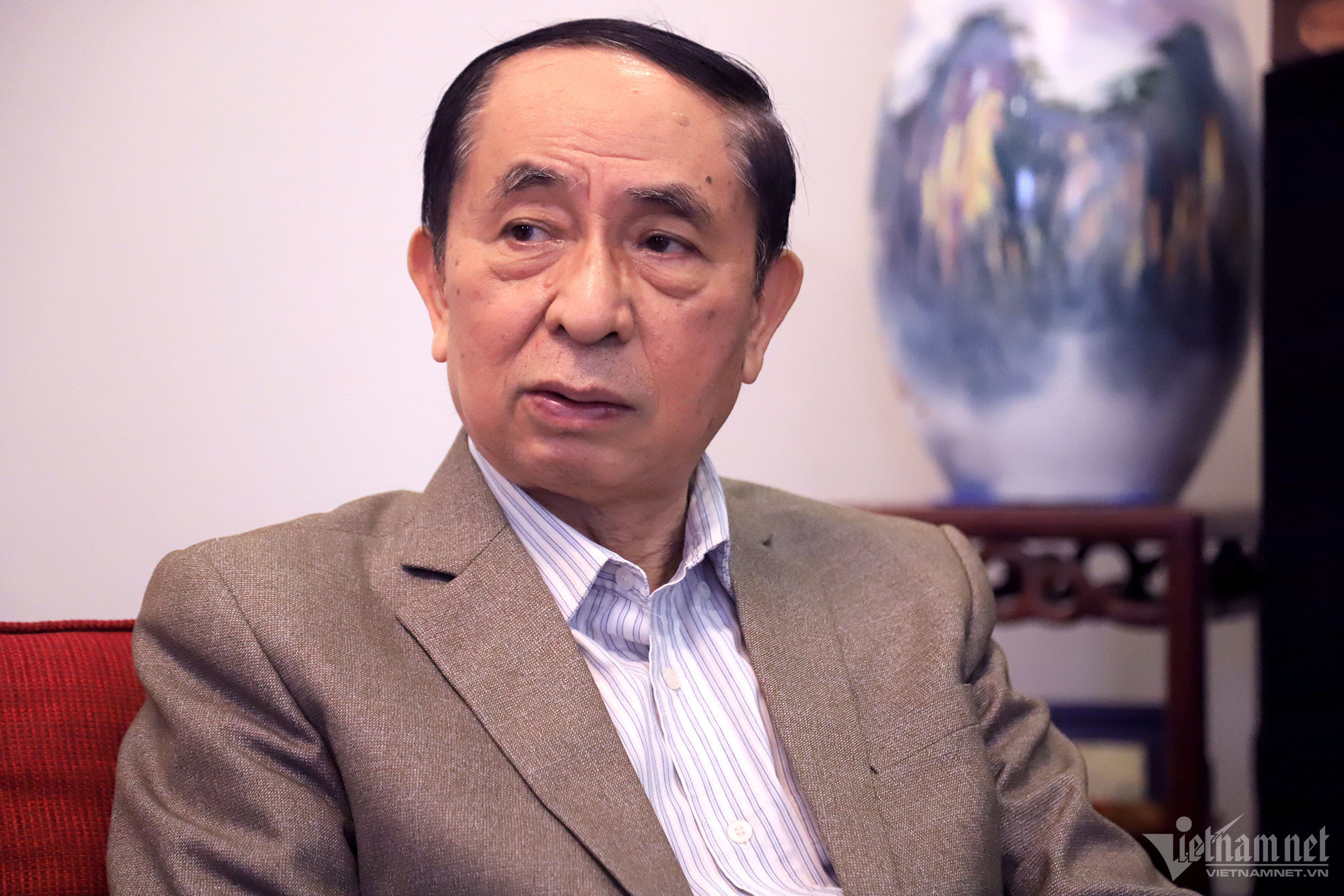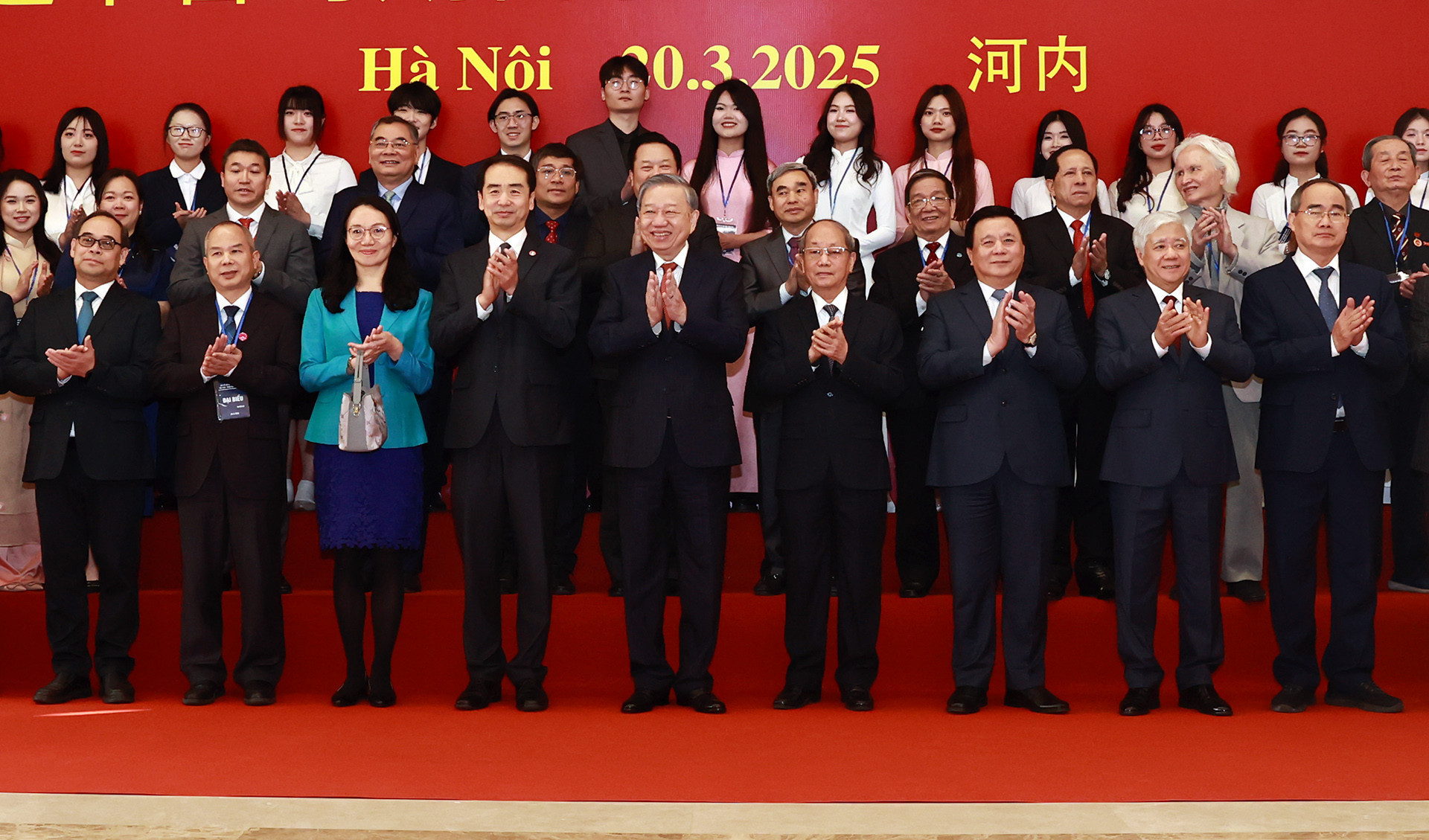This marks Xi Jinping’s fourth visit to Vietnam in his role as China’s top leader. The visit coincides with the "Year of Vietnam-China People-to-People Exchanges" and the 75th anniversary of the establishment of diplomatic relations between the two countries (1950-2025).
On this occasion, VietNamNet spoke with Nguyen Vinh Quang, Vice President of the Vietnam-China Friendship Association, who held key positions such as Director of the China-Northeast Asia Department (Central Committee for External Relations) and Minister-Counselor - Deputy Ambassador of Vietnam to China. He is a seasoned expert on China and bilateral relations.

According to Nguyen Vinh Quang, visits by China’s highest-ranking leaders to Vietnam have consistently held great significance, especially in recent years.
He emphasized that this year’s visit is particularly meaningful as the two countries mark 75 years of diplomatic ties and have designated 2025 as the "Year of Vietnam-China People-to-People Exchanges."
Coupled with a phone call between the two General Secretaries earlier this year, Xi Jinping’s visit could be seen as a catalyst for a series of upcoming bilateral events.
"This being Xi Jinping’s first international trip of 2025 clearly shows how much China values Vietnam," Quang remarked.
He expressed hope that the visit would enable both countries' leaders to discuss and reach new common understandings to further advance the bilateral relationship.
According to Quang, the visit is expected to yield several economic and trade agreements, especially in areas such as goods circulation and addressing trade imbalances.

He also anticipates infrastructure connectivity, particularly in railway systems, to be a key discussion point that could result in new agreements.
Over a year ago, both countries agreed to build a strategic “Vietnam-China Community with a Shared Future.” Quang believes this cooperation stems from long-term vision, and although results may not be immediate, its influence is already visible in leadership and public awareness.
“As someone actively involved in the friendship association, I frequently meet with Chinese counterparts and observe increasing political trust at all levels,” he noted.
One tangible outcome is the impressive growth in bilateral trade. In 2024, trade volume exceeded USD 200 billion according to Vietnam’s data and USD 260 billion per Chinese statistics.
Vietnam remains China’s largest trade partner in ASEAN and its fourth-largest globally. China is also the leading importer of Vietnam’s agricultural, forestry, and aquatic products, delivering real benefits to millions of Vietnamese farmers.
The foundation of Vietnam-China relations
Top leaders from both countries emphasize that the foundation of bilateral relations lies with the people. Deep and frequent people-to-people exchanges have become a major driving force of this friendship.
Highlighting the importance of public diplomacy, Quang explained: “In Vietnam-China relations, people-to-people exchanges play a unique role. Our two nations have interacted for thousands of years, with strong cultural convergence.”
Over the past 75 years, these interactions have drawn the two countries closer together.
Quang asserted that genuine friendship can only be built on mutual understanding and empathy. Strengthening interpersonal connections is essential, beyond just party or state channels.
He recalled Xi Jinping’s 2023 visit to Vietnam, during which both sides laid out six strategic pillars for advancing relations. Among them was the goal of strengthening social foundations – essentially the will and support of the people.

“People-to-people diplomacy plays a key role in achieving that,” Quang affirmed.
At a student exchange program held in March this year, General Secretary To Lam stated that “the affection between our two peoples originates and is sustained by the younger generation.”
Quang explained this as a recognition that such deep bonds are not formed overnight but rather cultivated over time. He stressed that once mutual understanding is established, it must be nurtured through youth engagement.
Representing the Vietnam-China Friendship Association, Quang shared that the organization is highly focused on raising awareness among young people. To do this effectively, he stressed the importance of historical education. “Our predecessors laid the foundation of this friendship, and it is our duty to carry it forward,” he said.
In the near future, the association will launch “red tourism” programs, retracing President Ho Chi Minh’s footsteps in China. These initiatives aim to deepen public, especially youth, understanding of the two nations’ revolutionary history and their long-standing relationship.
Tran Thuong